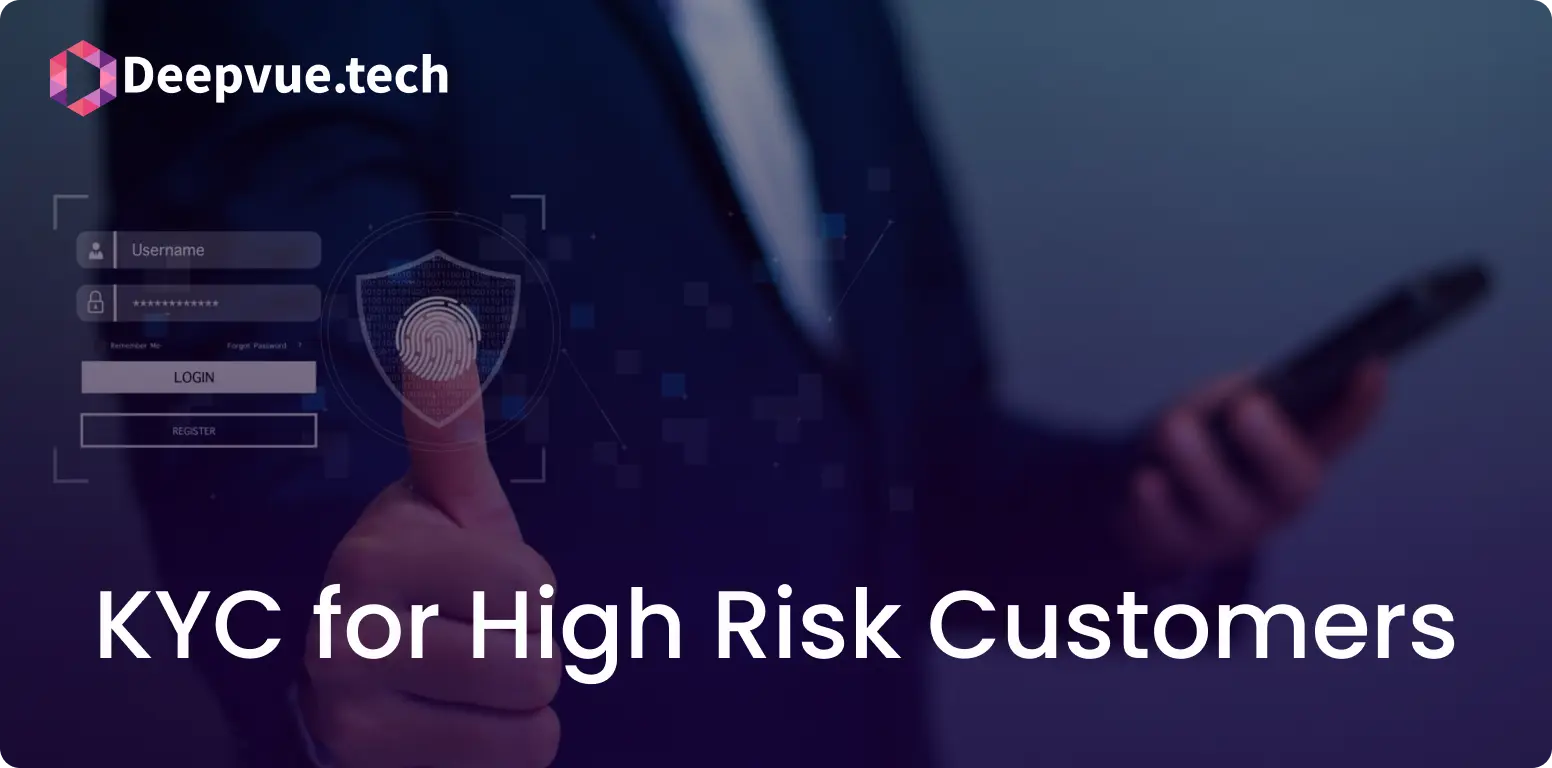Know Your Customer (KYC) procedures are essential for preventing money laundering, fraud, and other financial crimes. While a lot of focus is often placed on high-risk customers, understanding and managing medium risk customers is equally important. This guide aims to simplify the concept of KYC for medium risk customers, helping you navigate this critical aspect of financial compliance with ease.
Understanding KYC for Medium-Risk Customers and Why is it Important?
KYC stands for Know Your Customer, a process that financial institutions use to verify the identity of their clients. The main goal of KYC is to prevent financial crimes by ensuring that institutions are aware of who their customers are and what their financial activities involve. This process helps in assessing the risk a customer might pose and in taking appropriate measures to mitigate those risks.
Who are Medium Risk Customers?
Medium risk customers fall in the middle of the risk spectrum. They are not as straightforward as low-risk customers, nor are they as potentially dangerous as high-risk customers who require Enhanced Due Diligence (EDD).
Medium risk customers typically show behaviors or characteristics that require a closer look but do not need an intense scrutiny reserved for high-risk clients.
Identifying Medium Risk Customers
Identifying medium risk customers need a careful balance of various factors. Unlike high-risk customers who may have clear indicators such as operating in high-risk industries or regions, medium risk customers may not have such direct signals.
Instead, their risk level is determined by a combination of factors that, together, elevate their profile to require more attention than low-risk customers but less than high-risk ones.
Key criteria for classifying medium risk customers include:
- Occupation: Certain professions may pose more risk than others.
- Transaction Behavior: Large or frequent transactions, especially those that deviate from typical patterns.
- Geographic Location: Customers operating in regions with moderate levels of corruption or instability.
- Business Relationships: Associations with high-risk entities or individuals.
By accurately identifying medium risk customers, financial institutions can allocate their resources more effectively, ensuring that the appropriate level of due diligence is applied.
Enhanced Due Diligence (EDD) for Medium Risk Customers
While EDD is often associated with high-risk customers, it also plays a crucial role in managing medium risk customers. EDD involves a deeper investigation into a customer’s activities and financial background, providing a clearer picture of the potential risks they may pose.
Key Components of EDD for Medium Risk Customers
- Detailed Financial Profile: Creating a comprehensive profile that includes an in-depth analysis of the customer’s source of wealth and funds.
- Ongoing Transaction Monitoring: Setting up specific triggers for transactions that deviate from the customer’s normal pattern.
- Enhanced Background Checks: Conducting thorough background checks, including checks against global databases for any adverse media or connections to politically exposed persons (PEPs).
- Geographical and Sector-Specific Risk Analysis: Evaluating the customer’s exposure to geographical or sector-specific risks and incorporating this into the risk assessment.
Applying EDD selectively to medium risk customers helps balance thorough risk management with efficient customer service, ensuring that resources are focused where they are most needed.

Ongoing Monitoring Strategies for Medium Risk Customers
Ongoing monitoring is crucial for effective risk management. It involves continuously assessing a customer’s risk profile and adjusting the KYC measures as needed.
Techniques for Continuous Monitoring
- Automated Transaction Monitoring Systems: Utilizing technology to flag transactions that fall outside established patterns.
- Regular Risk Reassessment: Periodically reassessing customers’ risk profiles based on their activities and changes in regulations.
- Updating Customer Information: Ensuring that customer information is up-to-date and accurately reflects any changes in their status or activities.
- Enhanced Communication Channels: Encouraging open communication with customers to stay informed about significant changes or upcoming transactions.
The Importance of Adaptive Monitoring
Effective ongoing monitoring must be adaptable. Financial institutions need to be ready to adjust their monitoring parameters in response to emerging trends and new threats. Combining automated tools with manual processes creates a dynamic monitoring environment that enhances security while accommodating the changing nature of risk.
Leveraging Technology in KYC for Medium Risk Customers
Technology plays a crucial role in modern KYC processes. Innovations like Artificial Intelligence (AI), machine learning, and blockchain technology are transforming how institutions approach KYC, making it more efficient and accurate.
Technological Innovations Transforming KYC
- AI and Machine Learning: These technologies can analyze large amounts of data to identify patterns and unusual activities, improving the efficiency of identifying and verifying medium risk customers.
- Blockchain Technology: Provides a secure, unchangeable record of transactions, enhancing the transparency and security of the verification process.
Benefits of a Tech-Driven Approach
- Speed and Efficiency: Reduces the time required for customer identification and verification.
- Accuracy: Enhances the accuracy of risk assessments.
- Real-Time Monitoring: Enables institutions to respond quickly to changes in a customer’s risk profile..
Regulatory Compliance and Best Practices
Navigating the regulatory landscape is essential for managing medium risk customers. Financial institutions must comply with various laws and guidelines designed to prevent financial crimes.
Understanding Regulatory Expectations
Regulatory bodies worldwide emphasize a risk-based approach, requiring institutions to adjust their KYC efforts based on the customer’s risk level. This ensures that resources are allocated efficiently and effectively.
Best Practices for KYC Compliance
- Implement a Comprehensive KYC Policy: Develop and maintain a robust policy that outlines procedures for identifying, verifying, and monitoring medium risk customers.
- Utilize Technology: Leverage technological solutions to enhance the efficiency and accuracy of KYC processes.
- Train Staff Regularly: Ensure that staff are well-trained and up-to-date on regulatory requirements and technological advancements.
- Maintain Open Communication with Regulators: Keep open lines of communication with regulatory bodies to stay ahead of regulatory changes and adapt KYC processes accordingly.
Conclusion
Managing KYC for medium risk customers is a delicate balance of thorough compliance and efficient customer management. Leveraging technology and adhering to regulatory guidelines are key to navigating this complex landscape.
By continuously refining KYC frameworks and embracing innovation, financial institutions can ensure they are well-equipped to handle the nuances of medium risk customers, safeguarding against financial crimes while maintaining a high level of customer service.
To learn more about how Deepvue’s unified customer insights platform can enhance your online verification process, visit Deepvue.tech and explore our range of solutions designed to ensure accuracy and efficiency.
FAQs
What defines a medium risk customer?
Medium risk customers are those who show a moderate level of risk to financial institutions. This risk is determined based on factors such as their occupation, transaction behavior, geographic location, and business relationships.
How is KYC different for medium risk customers compared to high or low risk customers?
For medium risk customers, KYC involves a more thorough investigation than for low risk customers but less intensive than for high risk customers. This includes detailed financial profiling, ongoing transaction monitoring, and enhanced background checks.
What are some examples of transactions that might classify a customer as medium risk?
Examples include large or frequent transactions that are unusual for the customer’s regular activity, transactions with entities in moderately risky geographic locations, or occasional dealings with high-risk countries.
How does technology help in managing KYC for medium risk customers?
Technology such as AI, machine learning, and blockchain can enhance the efficiency and accuracy of KYC processes. These technologies help in analyzing large data sets, identifying patterns, and ensuring secure and transparent transaction records.
What are the best practices for ensuring regulatory compliance in KYC for medium risk customers?
Best practices include implementing a comprehensive KYC policy, leveraging technology, regularly training staff, and maintaining open communication with regulatory bodies. This ensures that financial institutions stay updated on regulatory changes and can adapt their KYC processes accordingly.








